
Judith Blume is an American writer of children's, young adult, and adult fiction. Blume began writing in 1959 and has published more than 25 novels. Among her best-known works are Are You There God? It's Me, Margaret. (1970), Tales of a Fourth Grade Nothing (1972), Deenie (1973), and Blubber (1974). Blume's books have significantly contributed to children's and young adult literature. She was named one of the 100 most influential people in the world by Time magazine in 2023.
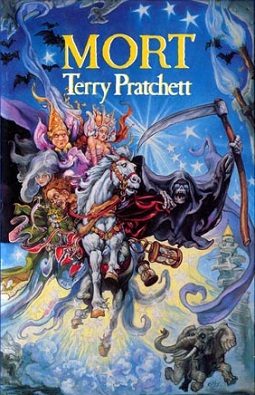
Mort is a fantasy novel by British writer Terry Pratchett. Published in 1987, it is the fourth Discworld novel and the first to focus on the character Death, who only appeared as a side character in the previous novels. The title is the name of its main character, and is also a play on words: in French and Catalan, mort means "death", while in Romanian means "dead". The French language edition is titled Mortimer, and the Catalan language edition is titled Morth.

The Color Purple is a 1982 epistolary novel by American author Alice Walker which won the 1983 Pulitzer Prize for Fiction and the National Book Award for Fiction.

Of Mice and Men is a novella written by John Steinbeck. Published in 1937, it narrates the experiences of George Milton and Lennie Small, two displaced migrant ranch workers, who move from place to place in California in search of new job opportunities during the Great Depression in the United States.
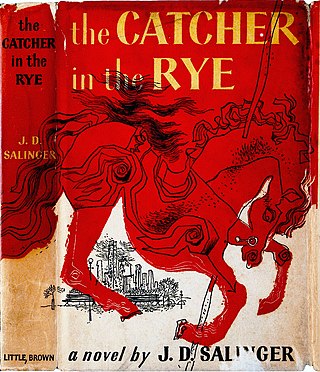
The Catcher in the Rye is a novel by American author J. D. Salinger that was partially published in serial form 1945–46 before being novelized in 1951. Originally intended for adults, it is often read by adolescents for its themes of angst and alienation, and as a critique of superficiality in society. The novel also deals with themes of innocence, identity, belonging, loss, connection, sex, and depression. The main character, Holden Caulfield, has become an icon for teenage rebellion. Caulfield, nearly of age, gives his opinion on a wide variety of topics as he narrates his recent life events.

The Giver is a 1993 American young adult dystopian novel written by Lois Lowry, set in a society which at first appears to be utopian but is revealed to be dystopian as the story progresses. In the novel, the society has taken away pain and strife by converting to "Sameness", a plan that has also eradicated emotional depth from their lives. In an effort to preserve order, the society also lacks any color, climate, terrain, and a true sense of equality. The protagonist of the story, a 12-year-old boy named Jonas, is selected to inherit the position of Receiver of Memory, the person who stores all the memories of the time before Sameness. Jonas struggles with concepts of the new emotions and things introduced to him, and whether they are inherently good, evil, or in between, and whether it is possible to have one without the other.
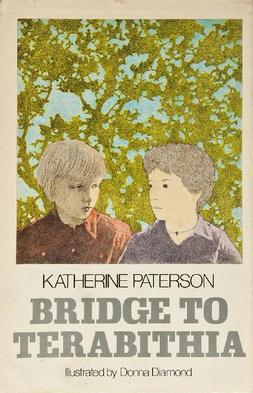
Bridge to Terabithia is a children's novel written by Katherine Paterson, about two children named Leslie and Jesse who create a magical forest kingdom in their imaginations. The book was originally published in 1977 by Thomas Crowell, and in 1978, it won the Newbery Medal. Paterson drew inspiration for the novel from a real event that occurred in August 1974 when her son's friend was struck and killed by lightning.

Killing Mr. Griffin is a 1978 suspense novel by Lois Duncan about a group of teenaged students at a New Mexico high school, who plan to kidnap their strict English teacher, Mr. Griffin. Duncan developed the story from the character of Mark, who is involved in the kidnapping plan and is based on the first boyfriend of Duncan's oldest daughter. Mr. Griffin was based on the personality of a teacher one of Duncan's daughters had in high school. In 2010, the novel was reissued with changes to modernize the content, making it more age appropriate and appealing to readers.

Are You There God? It's Me, Margaret. is a middle-grade novel by American writer Judy Blume, published in 1970. Its protagonist, Margaret Simon, is a sixth-grader who grows up without a religious affiliation because of her parents' interfaith marriage. This contemporary realistic novel was popular with middle-grade readers in the 1970s for its relatable portrayal of a young girl confronting early-adolescent anxieties, such as menstruation, brassieres and boys. The recipient of national honors and book awards, the novel has been challenged for its frank discussion of sexual and religious topics.
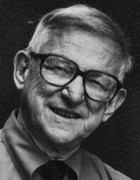
Robert Edmund Cormier was an American writer and journalist, known for his deeply pessimistic novels, many of which were written for young adults. Recurring themes include abuse, mental illness, violence, revenge, betrayal, and conspiracy. In most of his novels, the protagonists do not win.
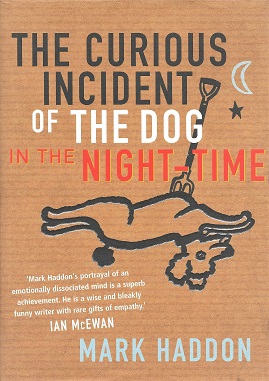
The Curious Incident of the Dog in the Night-Time is a 2003 mystery novel by British writer Mark Haddon. Its title refers to an observation by the fictional detective Sherlock Holmes in the 1892 short story "The Adventure of Silver Blaze". Haddon and The Curious Incident won the Whitbread Book Awards for Best Novel and Book of the Year, the Commonwealth Writers' Prize for Best First Book, and the Guardian Children's Fiction Prize. Unusually, it was published simultaneously in separate editions for adults and children.
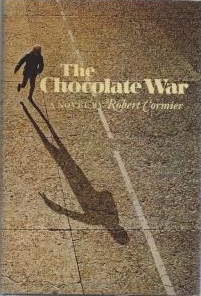
The Chocolate War is a 1974 young adult novel by American writer Robert Cormier. It was adapted into a film in 1988. Although it received mixed reviews at the time of its publication, some reviewers have argued it is one of the best young adult novels of all time. Set at a fictional Catholic high school, the story depicts a secret student organization's manipulation of the student body, which descends into cruel and ugly mob mentality against a lone, non-conforming student. Because of the novel's language, the concept of a high school secret society using intimidation to enforce the cultural norms of the school and various characters' sexual ponderings, it has been embroiled in censorship controversies and appeared as third on the American Library Association's list of the Top 100 Banned/Challenged Books in 2000–2009. A sequel was published in 1985 called Beyond the Chocolate War.

The Face on the Milk Carton is a young adult mystery novel written by author Caroline B. Cooney that was first published in 1990. The first in the five-book Janie Johnson series, it was later adapted into a film for television. The book is about a 15-year-old girl named Janie Johnson, who starts to suspect that her parents may have kidnapped her and that her biological parents are somewhere in New Jersey. These suspicions come after Janie recognizes a picture of herself on a milk carton under the heading "Missing Child." Janie's life gets more stressful as she tries to find the truth while hiding the secret from her parents.

Looking for Alaska is American author John Green's debut novel, published in March 2005 by Dutton Juvenile. Based on his time at Indian Springs School, Green wrote the novel as a result of his desire to create meaningful young adult fiction. The characters and events of the plot are grounded in Green's life, while the story itself is fictional.

Forever... is a 1975 novel by Judy Blume dealing with teenage sexuality. Because of the novel's content it has been the frequent target of censorship and appears on the American Library Association list of the 100 Most Frequently Challenged Books of 1990–2000 at number seven.
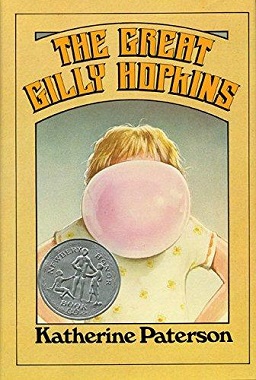
The Great Gilly Hopkins is a 1978 realistic children's novel by Katherine Paterson. It won the U.S. National Book Award in 1979. In 2012 it was ranked number 63 among all-time children's novels in a survey published by School Library Journal – the third of three books by Paterson in the top 100.
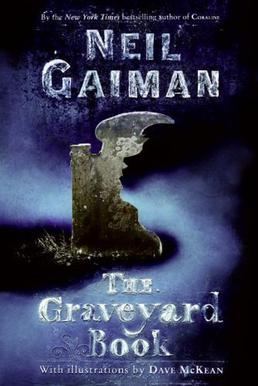
The Graveyard Book is a young adult novel written by the English author Neil Gaiman, simultaneously published in Britain and America in 2008. The Graveyard Book traces the story of the boy Nobody "Bod" Owens who is adopted and reared by the supernatural occupants of a graveyard after his family is brutally murdered.

Flowers for Algernon is a short story by American author Daniel Keyes, later expanded by him into a novel and subsequently adapted for film and other media. The short story, written in 1958 and first published in the April 1959 issue of The Magazine of Fantasy & Science Fiction, won the Hugo Award for Best Short Story in 1960. The novel was published in 1966 and was joint winner of that year's Nebula Award for Best Novel.
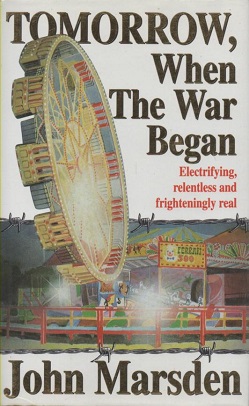
Tomorrow, When the War Began is the first book in the Tomorrow series by John Marsden. It was published in 1993, and is a young adult invasion novel, detailing a high-intensity invasion and occupation of Australia by a foreign power. The novel is told in first person perspective by the main character, a teenage girl named Ellie Linton, who is part of a small band of teenagers waging a guerrilla war on the enemy garrison in their fictional home town of Wirrawee.
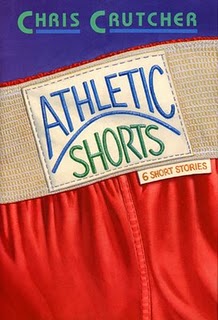
Athletic Shorts: Six Short Stories is a young adult fiction short story collection by Chris Crutcher. Most of the stories are related to Crutcher's early work and often come from his experience as a family counselor. This book also contains the short story "A Brief Moment in the Life of Angus Bethune" which first appeared in Connections, edited by Donald R. Gallo, published in 1989 by Delacorte Press. It was adapted into the film Angus. The novel has been met with challenges from school districts due to the book's inclusion of offensive language, homosexuality, and sexual content, and was the fourth most challenged book in 2006.



















